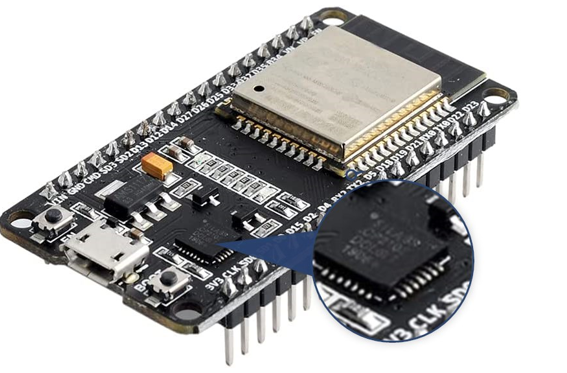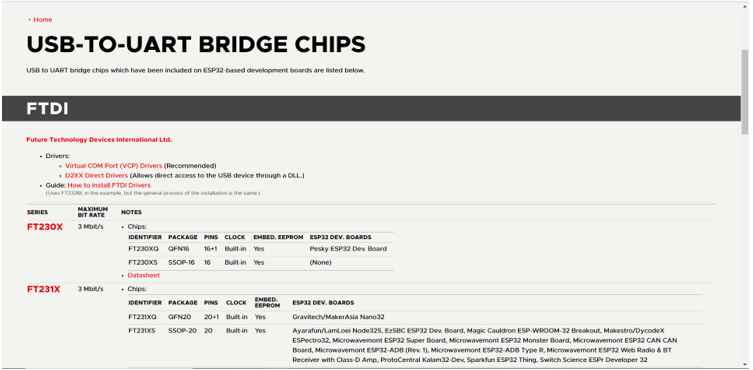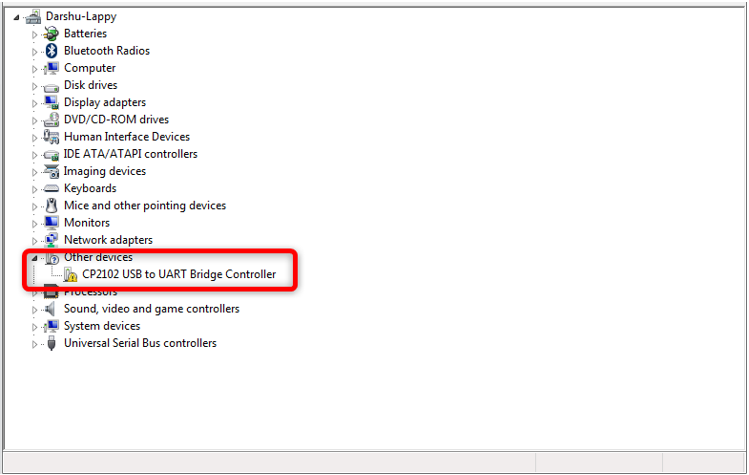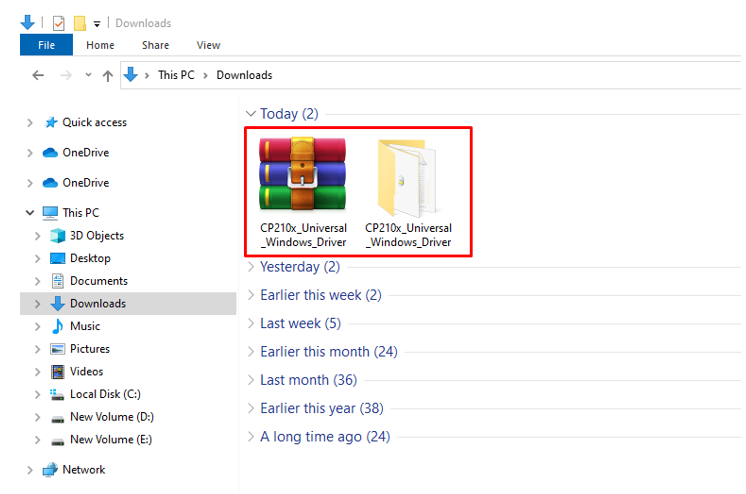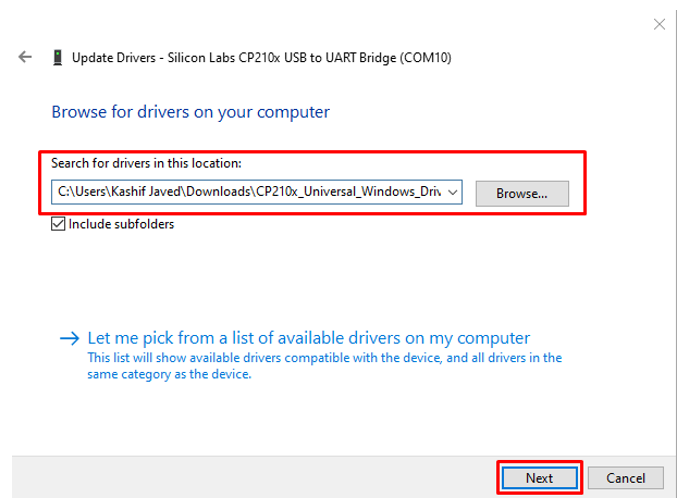ESP32 is a microcontroller board and to communicate with a PC ESP32 has onboard USB to UART bridge. Using this ESP32 can receive instruction from all UART devices. To establish this communication CP2102 chip is used. Before we can set up ESP32 with the PC the chip drivers must be installed in the PC.
Here in this article, we will look at all the steps needed to install the required driver for ESP32 in PC.
This article will comprise of following content:
1: ESP32 CP2102 USB to UART Bridge
2: How to Identify ESP32 Boards UART Chip
3: How to Check ESP32 Drivers Installed or Not
4: Installing CP2102 Drivers for ESP32 in Windows
1: ESP32 CP2102 USB to UART Bridge
USB to UART is like a language translator that converts one set of information to another. It interfaces two devices to exchange information and data. USB to UART is used in microcontroller boards like Arduino, NodeMcu, ESP32 and ESP8266. Using this chip serial communication is established between PC and microcontroller.
Most of the boards including ESP32 uses CP2102 for UART communication. It is a complete plug and play interface with free driver’s support.
Most of the time you will see CP2102 UART chips with microcontrollers. In case you have no idea about the chip model, we can also identify it.
2: How to Identify ESP32 Boards UART Chip
The first and simple step to identify the chip name is by reading it over the chip itself. Most of the time model numbers are written on chips. And most of these chips have the same package file.
In case the text is not readable on the UART chip. Now visit the ESP32 UART drivers website list, here we can see a list of all ESP boards along with their UART to USB bridge chip model number.
You will find all the necessary USB to UART chip driver information here.
Now as we have identified the chip so before moving to installation of the driver first check whether the drivers are already installed or not.
3: How to Check ESP32 Drivers Installed or Not
To check drivers’ installation, we can use two different methods:
-
- Using Arduino IDE
- Using Device Manager
3.1: Using Arduino IDE
Connect the ESP32 with PC and open Arduino IDE then go to tools>Port. If the drivers were not installed the port option will be grayed out.
3.2: Using Device Manager
Another way of checking ESP32 drivers is connect ESP32 with PC and open Device Manager then search for the drivers under devices or COM & LPT section. If the drivers were not available a yellow warning symbol can be seen.
Now we have identified the chip driver is missing. Next, we will install the driver.
4: Installing CP2102 Drivers for ESP32 in Windows
For serial communication between PC and ESP32 UART drivers are needed. To install ESP32 drivers, first connect the board with the PC.
Now follow the steps to complete drivers’ installation.
Step 1: Download drivers from the official Silicon Labs site.
Step 2: After the downloading is finished unzip the driver’s file.
Step 3: Now open the driver’s folder and copy its path.
Step 4: Open the Device Manager and search for the missing port driver.
Step 5: Now right click the drivers to be installed and select the update driver.
Step 6: In the new window click browse from the computer.
Step 7: Here paste the path we copied earlier then click Next.
Step 8: Drivers will start installing and once finished exit the window by clicking close.
We have successfully installed ESP32 drivers in windows now the board is ready for communication with the PC.
Conclusion
ESP32 is an IoT board which is programmed in a similar fashion like Arduino. First, we have to set up the required CP2102 drivers, then we can program it with Arduino IDE or any other editor. Here we covered all required steps to install ESP32 CP2102 USB to UART drivers. Read the article for the complete process.

